Which country's navy is the strongest in Asia?
According to the National Interest, although China is rising to gain influence in Asia, Japan actually has the strongest naval force.
The National Interest analysis said that Japan's navy is the strongest in Asia, with a total of 114 warships and 45,800 soldiers. The navy has a fleet of warships that is growing rapidly in both size and quality, with many powerful destroyers, modern attack submarines and landing ships that can carry tanks and marines.
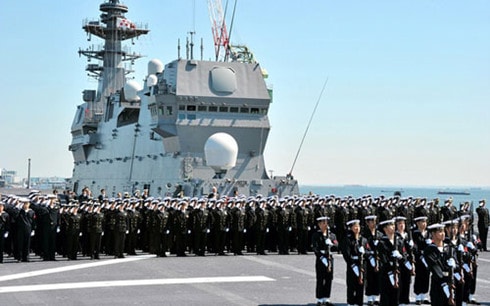 |
| The National Interest website believes that the Japanese Navy, not the Chinese Navy, is the strongest force in Asia. (Photo: Japanese Ministry of Defense) |
The country's navy is capable of destroying enemy submarines, repelling invasion fleets and shooting down enemy ballistic missiles. Despite its formidable strength, the Japanese Navy is not considered a real navy and is still known as the Maritime Self-Defense Force, according to the National Interest.
Technically, Japan’s Maritime Self-Defense Force (MSDF) is a “self-defense force” created to skirt the restrictions of the country’s pacifist Constitution. However, it is the most powerful navy in Asia.
The core of the MSDF includes a fleet of 46 destroyers and frigates – a number even larger than the fleets of similar ships of the British and French navies combined.
This Japanese fleet organization aimed to protect the country from invasion, help regain occupied Japanese territory, and keep sea lanes open.
Kongo-class destroyer
The “trump card” in the Japanese Navy is the Kongo-class guided missile destroyer. Currently, Japan has 4 Kongo-class destroyers: DDG-173 Kongo, DDG-174 Kirishima, DDG-175 Myoko and DDG-176 Cyokai.
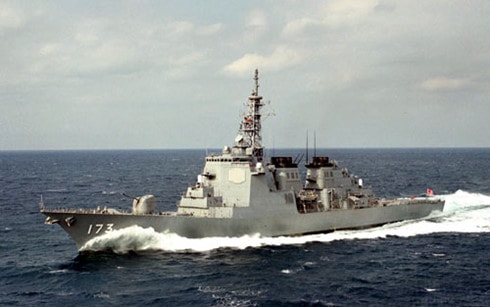 |
| The Kongo-class destroyer is the DDG-173 Kongo. (Photo: defenseindustrydaily) |
As part of the US-Japan inter-state missile defense program, Kongo is the first destroyer class of the Japanese Navy as well as the entire Asian region to be equipped with the state-of-the-art Aegis combat system.
It can be said that the "heart" of the Kongo-class destroyer is the state-of-the-art Aegis combat system designed to deal with a variety of different targets, especially ballistic missile interception.
Weapons on board include: 90 MK41 vertical launch tubes using SM-2 interceptor missiles or super SM-3 interceptor missiles, 8 RGM-84 Harpoon anti-ship missiles, a 127 mm naval gun, two Phalanx close-in interceptor systems, two 324 mm anti-submarine torpedo launchers.
The Kongo-class destroyer is distinguished by its AN/SPY-1 radar with four antenna arrays around the conning tower. The stern has a flight deck but no hangar for helicopters. The Kongo has a displacement of 9,500 tons.
The propulsion system is based on 4 LM-2500 gas turbine engines with a total capacity of 100,000 horsepower, maximum speed of 30 knots, operating range of 4,500 nautical miles.
Four Kongo-class Aegis destroyers, combined with other advanced US warships in the Asia region, form a joint ballistic missile defense posture between the two countries.
Izumo-class helicopter destroyer
The formidable strength of the MSDF is also supplemented by two Izumo-class helicopter destroyers named JS Izumo and JS Kaga – two ships with capabilities that are not inferior to aircraft carriers.
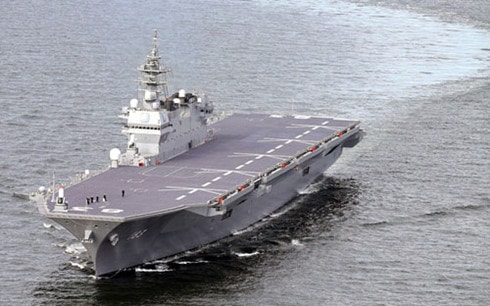 |
| Izumo-class helicopter destroyer. (Photo: Asahi Shimbun) |
The $1.2 billion JS Izumo helicopter destroyer was commissioned into the Japanese navy on March 25, 2015. JS Izumo is Japan's largest warship since World War II.
JS Izumo has a design very similar to a light aircraft carrier. At 248 m long and 38 m wide, the JS Izumo helicopter destroyer is even larger than the short take-off, vertical landing aircraft carriers of the Spanish and Italian navies.
With a displacement of 24,000 tons, JS Izumo has parameters comparable to the Royal Navy's Invincible-class aircraft carrier.
In addition, JS Izumo is also equipped with the latest features for electronic warfare systems, fire control and radar, ready to participate in any war in the 21st century.
JS Izumo is capable of carrying 14 helicopters, mainly MCH-101 and SH-60K models produced by Japan, possessing impressive anti-submarine and search and rescue capabilities. JS Izumo is also equipped with Phalanx close-in defense guns and SeaRam air defense missile systems, helping to effectively protect the ship against threats from enemy missiles.
JS Izumo can also effectively support amphibious assault operations because the ship can carry up to 400 marines and nearly 50 light military vehicles.
Another Izumo-class ship named JS Kaga, number DDH-184, was also launched at the end of August 2015 and is expected to be commissioned into the Japanese navy in 2017.
Submarine force
The submarine force is said to be the main component of the MSDF. Japan is building a submarine fleet of 20 to counterbalance the Chinese Navy. According to the National Interest, Japan's submarine fleet will include two main classes of submarines: the Oyashio-class submarine and the Soryu-class submarine.
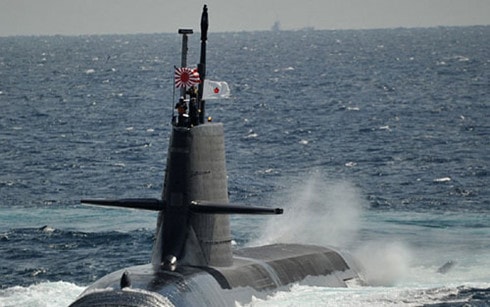 |
The Soryu-class submarine has a displacement of 4,200 tons. This is the largest submarine built in Japan after World War II, and is also one of the largest non-nuclear submarines in the world. The ship is 84 m long and 8.5 m wide. Soryu can dive to a maximum depth of 500 m, with an operating range of 6,100 nautical miles.
Soryu submarines are equipped with six 533 mm torpedo tubes that can fire Type-89 torpedoes or Harpoon anti-ship missiles. The ship can carry a total of 30 torpedoes and missiles. Soryu is equipped with ZPS-6F surface target search radar, ZLR-3 electronic warfare system. Decoy launching system to deceive acoustic guided weapons.
The heart of the ship is the air-independent propulsion (AIP) system. Four Stirling V4-275R Mk AIP engines are low noise and difficult to detect, allowing the ship to operate continuously underwater for up to 2 weeks.
Osumi-class tank landing ship
Finally, when mentioning the strength of the Japan Coast Guard, we cannot ignore the three Osumi-class tank landing ships in service with this force.
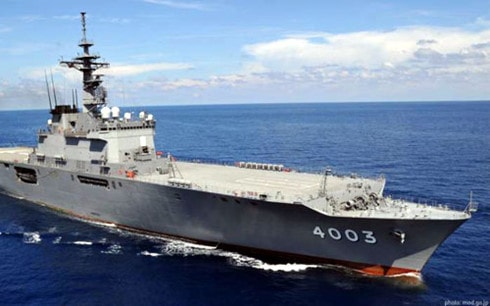 |
| Osumi-class tank landing ship. (Photo: Japan Ministry of Defense) |
The ship has a displacement of 13,000 tons. It can carry 1,400 tons of cargo, 14 Type 10 or Type 90 tanks and 1,000 soldiers. In addition, the ship can carry 2 hovercraft to transport equipment and soldiers to shore. The deck is large enough to accommodate 4 helicopters.
The Osumi-class ships are used by the MSDF to strengthen the defense of frontline islands. In addition, they can be used for rescue missions in the event of large-scale natural disasters.
The Japanese Navy's pre-eminent power in Asia was demonstrated when a devastating 9.0 magnitude earthquake struck off the northern coast of Japan on March 11, 2011.
At that time, Vice Admiral Hiromi Takashima, commander of the Yokosuka Naval District, immediately took temporary command of the entire Japan Maritime Self-Defense Force (MSDF) and ordered all ships present in northern Japan to the earthquake area.
The first ship set sail just 45 minutes after the earthquake struck. Seventeen other ships loaded with all the necessary supplies to help the people in the disaster area then set sail within 18 hours.
The ability to maneuver quickly in emergency situations is said to be the real test that proves the effectiveness and professionalism of the Japan Maritime Self-Defense Force.
According to VOV
| RELATED NEWS |
|---|

